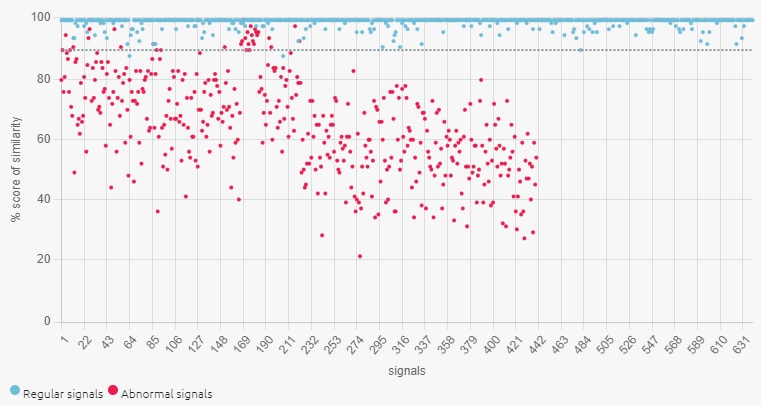Pump anomaly detection based on vibrations
Learn to detect abnormal behavior at the edge on a vibrating machine.


Industrial equipment, such as water pumps, produce different signals during operation. By placing sensors on these pieces of equipment for data collection, it is possible to use machine learning to recognize normal and abnormal behavioral patterns. This proactive approach aims at minimizing downtime, increasing efficiency, and extending equipment lifespan.
We implemented the following approach on a water pump: we collected and analyzed its vibrations and used a machine learning model to detect anomalies. This approach can easily be adapted to many other industrial machines.
Approach
- detect anomalies in a hydraulic circuit equipped with a pump by using the vibrations of the pump.
- show that our model can be used on a completely different integrated circuit and is still able to detect anomaly thanks to our edge AI learning technology.
In this project, we used a first circuit to log the vibration data of the pump using an accelerometer. We gathered both normal and abnormal signals, which were created by closing the taps that diverted the flow of water.
We then created an anomaly detection model in the NanoEdge AI Studio. The software tool generated the most optimized model for our learning data.
The model created was loaded on a STEVAL-PROTEUS1 and connected to a first circuit. This prototype allowed us to detect both normal and abnormal data in real time.
We then moved the Proteus board containing the model to a second circuit. We used on-edge learning to retrain the same model with the signals of the new circuit in few seconds. The model performed well on the new circuit, even if it was originally optimized for the first one.
Sensor
Data
- Regular signals: 640 signals of pump vibrations with the first circuit in a normal state
- Abnormal signals: 440 signals of pump vibrations with one of both deviations blocked
Signal length 768 (256 per axis, 3 axes)
Data rate 6667 Hz, range: 2g
Results
Anomaly detection classes:
100% accuracy, 7.8 Kbytes RAM, 6.1 Kbytes Flash



Blue points represent the normal signals, red points the abnormal ones.
The signal values are on the abscissa axis and the confidence level of the prediction is shown on the ordinate
Resources
Model created with NanoEdge AI Studio
A free AutoML software for adding AI to embedded projects, guiding users step by step to easily find the optimal AI model for their requirements.
The STM32 family of 32-bit microcontrollers based on the Arm Cortex®-M processor is designed to offer new degrees of freedom to MCU users. It offers products combining very high performance, real-time capabilities, digital signal processing, low-power / low-voltage operation, and connectivity, while maintaining full integration and ease of development.